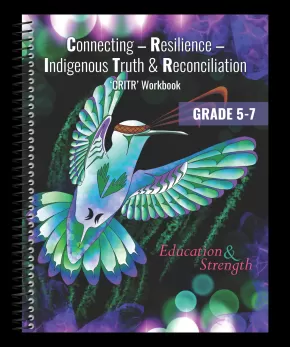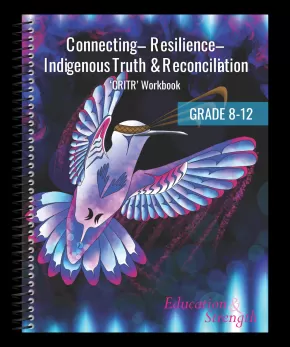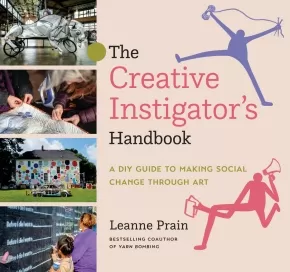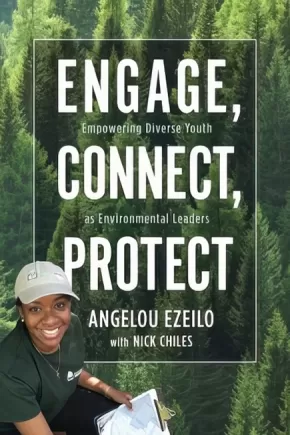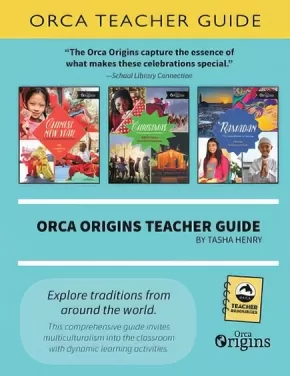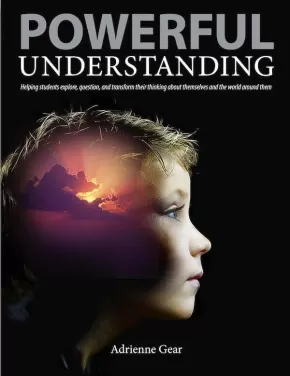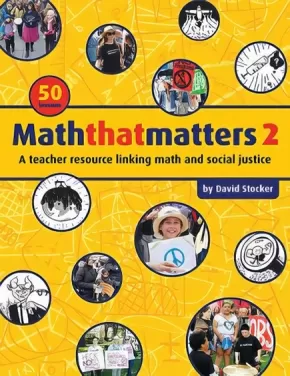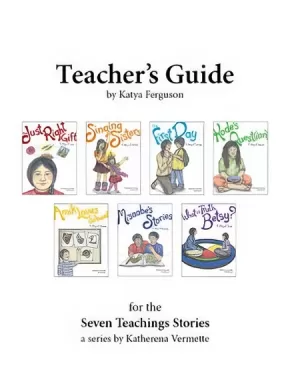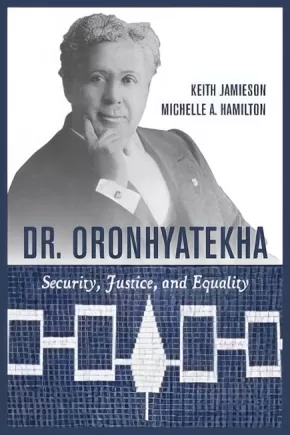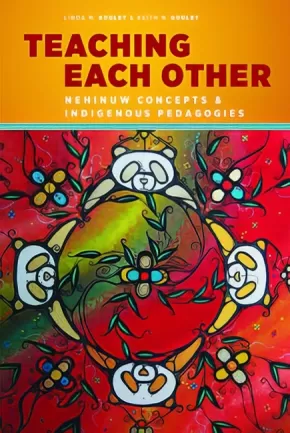
Social Responsibility Resources
1
-
14
of
14 Results;
Sort By
Animals Care for Mother Earth: A Teaching Resource for Personal Development
$16.95
Artists:
Format:
Paperback
Text Content Territories:
Indigenous Canadian; First Nations; Tsimshian (Ts'msysen);
ISBN / Barcode: 9781771745970
Synopsis:
Synopsis:
Animals Care for Mother Earth comprises six contemporary, interrelated stories and supporting resources for teachers. In the first story, animals cooperate to clean up a polluted pond. In subsequent stories, they care for each other in the aftermath of the pollution problem, demonstrating strength of character and social responsibility. This book can be used in elementary schools to teach—through storytelling—the value of personal strengths and community supports while incorporating Tsimshian language and knowledge into classroom lessons. It also provides many opportunities to extend the learning to other curriculum areas, including science, math, reading, writing, social studies, and art.
Reviews
"This teaching resource uses storytelling as a way to impart knowledge and initiate discussions and activities that support social and emotional learning.” – Canadian Teacher Magazine, Spring 2023 issue
Educator Information
Recommended for use with grades 1 to 6 (elementary students).
Everything educators need is included in this single work -- contemporary Indigenous stories to read aloud and explore with students, as well as story guides, a map, plant information pages, suggestions for classroom activities, discussion questions, inquiry activities, talking together points, information to support intergenerational or peer-to-peer learning, and connections to the Core Competencies and social and emotional learning (SEL) competencies.
Find a bundle for Animals Care for Mother Earth that includes the book and learning environment resources HERE!
Additional Information
32 Pages | 8.5" x 11" | ISBN: 9781771745970 | Paperback
Connecting – Resilience – Indigenous Truth & Reconciliation ‘CRITR’ Workbook: Grade 5 - 7
$29.95
Artists:
Format:
Coil Bound
Text Content Territories:
Indigenous Canadian; First Nations; Inuit; Métis;
ISBN / Barcode: 9781990448348
Synopsis:
Synopsis:
CRITR provides dozens of lessons and 100s of questions covering important topics including: Indigenous Canadian History, Residential Schools, Indigenous Contributions past and present, Treaties, and Indigenous Days of Recognition in Canada.
This book is a collection of parts of the history of the Indigenous Peoples in Canada and of the process of reconciliation. It is designed to educate all children and youth -- our future leaders -- about Indigenous history and current events. It is intended to give a better understanding and to positively contribute to reconciliation.
Together, we must consider the past, the present, and the future in our efforts to better ourselves and future generations.
This book provides a wealth of high-quality articles and learning activities, consisting of units and lessons that can be used by anyone -- teachers, parents, students, business professionals -- who may have little or no prior knowledge or understanding of Indigenous Peoples or subjects.
In this book, you will meet real Indigenous Peoples speaking out and sharing their stories and their firsthand experiences, and you will clearly hear their passion for reconciliation.
This book is unique. The stories told within its covers are unique, just like everyone working through their own journey of understanding and doing their small part towards reconciliation.
“We need to pursue reconciliation consistently and passionately. Education has gotten us into this mess, and education will get us out. We see this as our challenge and our hope.” -The Honourable Senator Murray Sinclair
Educator Information
Recommended for grades 5 to 7.
CRITR Workbook Features
- Indigenous knowledge from different Indigenous Peoples and Indigenous perspectives.
- Dozens of lessons covering important topics including Residential Schools, Treaties, and Indigenous Contributions.
- Beautiful original art on the cover and throughout the book.
- An Indigenous worldview expressing people's need to develop themselves and their children, in a way that addresses their spiritual, physical, emotional, and mental gifts.
- An approach to the teaching and healing process that is interconnected and cyclical in nature.
- An introduction to readers of the concept of a "sacred circle," also known as a medicine wheel, as well as First Peoples' principles of learning in general terms.
- Words of encouragement.
- A balance between too much and too little content.
- Information and a layout to inform and inspire without overwhelming the teacher or the student, in the classroom or at home.
- Fresh insights and learning activities for key Indigenous events that are celebrated annually in schools and communities across the Nation.
- Critical thinking questions to inspire new learning.
- Activities for individuals and groups.
- The font in the grade 5 to 7 book is ideal for young readers ( Arial 13.5-point font). Additionally, the grade 5 to 7 book features shorter sentence structure for easy reading and comprehension.
- A few activities and lessons featured in the grade 8 to 12 resource have been changed or removed in the grade 5 to 7 book due to the maturity level of the subject matter.
- Grade-level appropriate word choices to help with improved vocabulary.
How is the CRITR workbook organized?
Each lesson follows this pattern:
- An easy-to-read lesson that may be read in under 5 minutes
- A vocabulary focus called Word Power that defines key words from the lesson
- A set of questions easily answered from the reading
- A Critical Thinking section is included to enhance learning
- Sprinkled throughout the CRITR Workbook are relevant individual and group activity recommendations.
Additional resources are identified throughout the pages with links, including information about how to connect with the Indigenous authors and artists.
Activities, colouring, and word search pages may be downloaded for free. An answer key is included at the end of the book.
What will students learn from this resource?
- Reconciliation is about change, justice, respect, and re-building the relationships between the Indigenous and non-Indigenous Peoples in Canada
- Indigenous History of Canada
- Empathy that comes from understanding and being educated
- Knowledge about important and sensitive topics, including stories told by Indigenous authors about what occurred at residential schools. It is important to know these stories of assimilation
- Capacity for intercultural understanding, empathy, and mutual respect as prescribed specifically in CTA #63
Educator Information
For grades 5 to 7.
A $5 per book discount is applied to a purchase of 10 or more books.
This book is available in French: Connexion - Résilience - Vérité et réconciliation autochtones Ressource - 5e à 7e année
Additional Information
176 Pages | 9" x 11.5" x 0.5" | Spiral Bound
Connecting – Resilience – Indigenous Truth & Reconciliation ‘CRITR’ Workbook: Grade 8 - 12
$29.95
Artists:
Format:
Coil Bound
Text Content Territories:
Indigenous Canadian; First Nations; Inuit; Métis;
ISBN / Barcode: 9781990448355
Synopsis:
Synopsis:
CRITR provides dozens of lessons and 100s of questions covering important topics including: Indigenous Canadian History, Residential Schools, Indigenous Contributions past and present, Treaties, and Indigenous Days of Recognition in Canada.
This book is a collection of parts of the history of the Indigenous Peoples in Canada and of the process of reconciliation. It is designed to educate all children and youth -- our future leaders -- about Indigenous history and current events. It is intended to give a better understanding and to positively contribute to reconciliation.
Together, we must consider the past, the present, and the future in our efforts to better ourselves and future generations.
This book provides a wealth of high-quality articles and learning activities, consisting of units and lessons that can be used by anyone -- teachers, parents, students, business professionals -- who may have little or no prior knowledge or understanding of Indigenous Peoples or subjects.
In this book, you will meet real Indigenous Peoples speaking out and sharing their stories and their firsthand experiences, and you will clearly hear their passion for reconciliation.
This book is unique. The stories told within its covers are unique, just like everyone working through their own journey of understanding and doing their small part towards reconciliation.
“We need to pursue reconciliation consistently and passionately. Education has gotten us into this mess, and education will get us out. We see this as our challenge and our hope.” -The Honourable Senator Murray Sinclair
Educator Information
Recommended for grades 8 to 12.
CRITR Workbook Features
- Indigenous knowledge from different Indigenous Peoples and Indigenous perspectives.
- Dozens of lessons covering important topics including Residential Schools, Treaties, and Indigenous Contributions.
- Beautiful original art on the cover and throughout the book.
- An Indigenous worldview expressing people's need to develop themselves and their children, in a way that addresses their spiritual, physical, emotional, and mental gifts.
- An approach to the teaching and healing process that is interconnected and cyclical in nature.
- An introduction to readers of the concept of a "sacred circle," also known as a medicine wheel, as well as First Peoples' principles of learning in general terms.
- Words of encouragement.
- A balance between too much and too little content.
- Information and a layout to inform and inspire without overwhelming the teacher or the student, in the classroom or at home.
- Fresh insights and learning activities for key Indigenous events that are celebrated annually in schools and communities across the Nation.
- Critical thinking questions to inspire new learning.
- Activities for individuals and groups.
- Grade-level appropriate word choices to help with improved vocabulary.
How is the CRITR workbook organized?
Each lesson follows this pattern:
- An easy-to-read lesson that may be read in under 5 minutes
- A vocabulary focus called Word Power that defines key words from the lesson
- A set of questions easily answered from the reading
- A Critical Thinking section is included to enhance learning
- Sprinkled throughout the CRITR Workbook are relevant individual and group activity recommendations.
Additional resources are identified throughout the pages with links, including information about how to connect with the Indigenous authors and artists.
Activities, colouring, and word search pages may be downloaded for free. An answer key is included at the end of the book.
What will students learn from this resource?
- Reconciliation is about change, justice, respect, and re-building the relationships between the Indigenous and non-Indigenous Peoples in Canada
- Indigenous History of Canada
- Empathy that comes from understanding and being educated
- Knowledge about important and sensitive topics, including stories told by Indigenous authors about what occurred at residential schools. It is important to know these stories of assimilation
- Capacity for intercultural understanding, empathy, and mutual respect as prescribed specifically in CTA #63
Educator Information
Recommended for grades 5 to 12.
A $5 per book discount is applied to a purchase of 10 or more books.
This book is available in French: Connexion - Résilience - Vérité et réconciliation autochtones Ressource - 8e à 12e année
Additional Information
188 Pages | 9" x 11.5" x 0.5" | Spiral Bound
The Creative Instigator's Handbook: A DIY Guide to Making Social Change through Art
$27.95
Format:
Paperback
ISBN / Barcode: 9781551528755
Synopsis:
Synopsis:
A guide for creatives to making impactful, socially engaged art projects.
Flash mobs come and go, but purposeful creativity can change communities. Are you a creative (aspiring or otherwise) who is curious about how you can apply your skills to activist, socially engaged art projects? Whether you paint, sew, sing, build, weld, or rhyme, The Creative Instigator's Handbook explores how to take that big project you've been dreaming about and actually make it happen.
In response to the challenging times that we live in, The Creative Instigator's Handbook will inspire readers to use their creativity to spur change in the world around them. Guiding readers through the various aspects of a project from ideation to final documentation, the book examines the relationship between creative leadership, community art projects, and social justice, and includes the perspectives of 23 creative instigators who have stretched the boundaries of what "art" should or shouldn't do.
The Creative Instigator's Handbook will appeal to creatives willing to expand their comfort zones by jumping into the fray and doing some outrageous, inspired rabble-rousing of their very own. Full-colour throughout.
Additional Information
272 pages | 8.50" x 8.00" | Paperback
Teaching Fairly in an Unfair World 2nd Edition
$28.95
Format:
Paperback
ISBN / Barcode: 9781551383439
Synopsis:
Synopsis:
An open-ended approach to giving students voice and challenging them to think critically about social justice issues.
This era of so-called fake news demands a deeper curriculum that questions the inconsistencies of facts and opinions in various texts and images. This timely new edition of a groundbreaking book offers students opportunities to connect with social justice issues through inventive language exploration and the active examination of all forms of media. It encourages teachers to evaluate their core teaching beliefs and recognize the realities of their students’ lives to develop a richer understanding of our complex world. A glossary of more than 50 strategies, along with reproducible pages for easy classroom use, complements this essential resource.
Educator Information
This edition has been updated to reflect current political, social, and cultural challenges.
This book will help students understand what is fair for them and others. It features engaging ways to connect classrooms to social justice issues through collaboration, language instruction and responding to media.
Includes detailed mini-lessons that have inspired many classrooms.
Keywords/Subjects: inclusive classrooms, inclusivity, voice and choice, critical thinking, thinking skills, media awareness, social justice, empathy, understanding, comprehension, classroom strategies, fake news, facts, inconsistency, reporting, issues, evaluation, teachers, education.
Additional Information
160 pages | 8.38" x 10.88" | 2nd Edition
Teaching Tough Topics: How Do I Use Children's Literature to Build a Deeper Understanding of Social Justice, Equity, and Diversity?
$28.95
Format:
Paperback
Text Content Territories:
Indigenous;
ISBN / Barcode: 9781551383415
Synopsis:
Synopsis:
Teaching Tough Topics shows teachers how to lead students to become caring citizens as they read and respond to quality children’s literature. It focuses on topics that can be challenging or sensitive yet significant for building an understanding of social justice, diversity and equity. Racism, homophobia, bullying, religious intolerance, poverty, and physical and mental challenges are just some of the themes explored. The book is rooted in the belief that, by using picture books, novels, poetry, and nonfiction, teachers can enrich learning with compassion and empathy as students make connections to texts, to others and to the world.
Educator Information
Teaching Tough Topics is a timely approach to a better understanding of diversity, equity and social justice with clear instructions on how to implement a range of instructional strategies at different grade levels.
This book offers a valuable overview of tough topics including bullying, poverty, homophobia, gender, racism, death, Indigenous culture, physical and mental challenges, and religious intolerance.
Includes a comprehensive, up-to-date book list including picture books, novels, poetry and nonfiction titles that can be used to explore each topic.
Contains some Indigenous content.
Additional Information
144 pages | 8.38" x 10.88"
Engage, Connect, Protect: Empowering Diverse Youth as Environmental Leaders
$19.99
Format:
Paperback
Text Content Territories:
Indigenous American; Native American;
ISBN / Barcode: 9780865719187
Synopsis:
Synopsis:
Building environmental strength through a diversity of youth.
While concern about the state of our land, air, and water continues to grow, there is widespread belief that environmental issues are primarily of interest to wealthy white communities. Engage, Connect, Protect explodes this myth, revealing the deep and abiding interest that African American, Latino, and Native American communities – many of whom live in degraded and polluted parts of the country – have in our collective environment.
Part eye-opening critique of the cultural divide in environmentalism, part biography of a leading social entrepreneur, and part practical toolkit for engaging diverse youth, Engage, Connect, Protect covers:
- Why communities of color are largely unrecognized in the environmental movement
- Bridging the cultural divide and activate a new generation of environmental stewards
- A curriculum for engaging diverse youth and young adults through culturally appropriate methods and activities
- A resource guide for connecting mainstream America to organizations working with diverse youth within environmental projects, training, and employment.
Engage, Connect, Protect is a wake-up call for businesses, activists, educators, and policymakers to recognize the work of grassroots activists in diverse communities and create opportunities for engaging with diverse youth as the next generation of environmental stewards.
Educator Information
While this work has a US focus, it is still extremely relevant in other countries like Canada.
Additional Information
256 pages | 6.00" x 9.00"
Orca Origins Teacher Guide (1 in Stock)
$29.95
Format:
Paperback
ISBN / Barcode: 9781459822443
Synopsis:
Synopsis:
Orca Origins is a nonfiction series for middle readers that explores cultural traditions around the world. This guide helps educators use the Orca Origins series to build an inquiry-based unit plan that focuses on the diverse traditions from different cultural celebrations around the world and teaches students tolerance. This is done with a variety of dynamic learning activities, handouts and graphic organizers to support students’ learning. The guide includes introductions to six Orca Origins titles: Birthdays, Chinese New Year, Christmas, Diwali, Passover, and Ramadan.
Key Points:
- In the current climate of divisiveness, it is now more important than ever to encourage multicultural understanding -- this guide shows educators how to do that in the classroom.
- Tasha Henry is an experienced educator who holds a Master of Education in Language, Culture, and Teaching.
- Themes include inquiry-based learning, responsive teaching, multicultural education, teaching to diversity.
Additional Information
48 pages | 11.00" x 8.50"
When Kids Rule the School: The Power and Promise of Democratic Education
$19.99
Format:
Paperback
ISBN / Barcode: 9780865719040
Synopsis:
Synopsis:
How self-directed democratic schooling builds fulfilling lives and can lead the way back to a civilized society.
Education is ripe for democratic disruption. Students in most schools are denied fundamental social ideals such as personal freedom, public government, rule of law, and free enterprise. In our increasingly authoritarian post-truth world, self-directed democratic schooling offers a timely alternative: educating children in civilized society and showing that self-motivation outperforms coercion in its power to educate and fulfill.
When Kids Rule the School is the first comprehensive guide to democratic schooling, where kids practice life in a self-governed society—empowered as voters, bound by laws, challenged by choice, supported by community, and driven by nature. Through heartwarming stories and hard-headed details, this book covers:
- Democratic schooling philosophy, theory, and practice
- School governance by students and staff together
- Student self-direction and day-to-day life
- Deep play, cognitive development, and critical thinking
- Why democratic schooling is morally right and effective
- Model bylaws and guidance for starting a democratic school.
Created for educators, parents, and scholars, When Kids Rule the School will immerse you, heart and mind, in a promising new approach to education, and stretch your thinking about what school can be.
Educator Information
When Kids Rule the School lays out the theory and practice of self-directed democratic schooling.
Written by the co-founder of The Circle School, open since 1984.
Self-directed democratic schooling results in higher rates of college attendance, more undergraduate and graduate degrees, healthy relationships with authority, and unflinching self-responsibility.
Intended for educators, parents (especially homeschoolers and unschoolers), and scholars of education.
Additional Information
288 pages | 6.00" x 9.00" | 10 illustrations
Powerful Understanding: Helping Students Explore, Question, and Transform Their Thinking about Themselves and the World Around Them
$24.95
Format:
Paperback
ISBN / Barcode: 9781551383286
Synopsis:
Synopsis:
Helping students explore, question, and transform their thinking about themselves and the world around them.
In these challenging times, teaching children to think critically and reflectively AND be compassionate, responsible and caring citizens at the same time is a tall order. Powerful Understanding explores effective ways to build social-emotional skills and help students make connections, question what they read, and reflect on their learning as they develop into stronger readers and learners. Strategic and critical thinking strategies revolve around core anchor books that help integrate thinking into everything you teach—from social responsibility, to immigration, to life cycles. This highly readable book includes a wealth of classroom examples and extensive hands-on activities designed to help students to think more deeply, learn more widely, and develop a more powerful understanding of what it means to be a responsible and compassionate person.
Educator Information
Grade Range: K-8
Table of Contents
Preface
Introduction
Chapter 1: The Components of Powerful Understanding
Chapter 2: Lessons on Understanding Self
Chapter 3: Lessons on Understanding Others
Chapter 4: Lessons on Understanding the World
Final Thoughts
Acknowledgments
Professional Resources
Index
Additional Information
160 pages | 8.30" x 10.80"
Math That Matters 2: A Teacher Resource Linking Math and Social Justice
$39.95
Format:
Paperback
ISBN / Barcode: 9781771253123
Synopsis:
Synopsis:
Maththatmatters Volume 2 gets to the very root of what education is about: giving students the tools to better understand their world and facilitate positive social change. David Stocker's groundbreaking work provides educators and students with timely and engaging lesson plans, designed for grades 6-9, using math to teach about social justice in a way that is both accessible and powerful.
Reviews
"Maththatmatters brings together math and social justice, in a way that makes them both more compelling, and the world a little more understandable." — Linda McQuaig, author
"Actually, I have never understood math better. Not only do I understand the general skill, I can also begin to understand the world better. And if I understand the world better I can change things. And knowing that is one of the best things in the entire world. There is no way to describe that feeling." — Xochil, student
Additional Information
320 pages | 8.50" x 11.00"
The Seven Teachings Stories Teacher's Guide
$12.95
Format:
Paperback
Text Content Territories:
Indigenous Canadian; First Nations; Anishinaabeg;
ISBN / Barcode: 9781553797050
Synopsis:
Synopsis:
Designed to help teachers in early years classrooms use The Seven Teachings Stories series, by Katherena Vermette, this guide provides the framework and key ideas educators need to become participants in a culturally responsive classroom community and to deepen their understanding of the Seven Teachings. With these stories, educators can create a space to discuss diverse perspectives, experiences, and traditions with young readers, and to foster a deeper understanding of ourselves as human beings and of our relationships with others.
This guide is presented in three sections and includes:
Key information about the Seven Teachings, Anishinaabe vocabulary, and the characters in each story.
Ideas to guide student learning.
Approaches and suggestions that teachers can apply to any of the seven stories.
Strategies and activities to deepen readers’ understanding of the abstract concepts addressed in the stories.
An appendix of reproducible classroom materials.
Additional Information
36 pages | 8.50" x 11.00"
Dr. Oronhyatekha: Security, Justice, and Equality
$26.99
Format:
Paperback
Text Content Territories:
Indigenous American; Native American; Haudenosaunee (Iroquois); Kanyen'keha:ka (Mohawk);
Grade Levels: University/College;
ISBN / Barcode: 9781459706637
Synopsis:
Synopsis:
A man of two cultures in an era where his only choices were to be a trailblazer or get left by the wayside.
Dr. Oronhyatekha (“Burning Sky”), born in the Mohawk nation on the Six Nations of the Grand River territory in 1841, led an extraordinary life, rising to prominence in medicine, sports, politics, fraternalism, and business. He was one of the first Indigenous physicians in Canada, the first to attend Oxford University, a Grand River representative to the Prince of Wales during the 1860 royal tour, a Wimbledon rifle champion, the chairman of the Grand General Indian Council of Ontario, and Grand Templar of the International Order of Good Templars. He counted among his friends some of the most powerful people of the day, including John A. Macdonald and Theodore Roosevelt. He successfully challenged the racial criteria of the Independent Order of Foresters to become its first non-white member and ultimately its supreme chief ranger.
At a time when First Nations peoples struggled under assimilative government policy and society’s racial assumptions, his achievements were remarkable.
Oronhyatekha was raised among a people who espoused security, justice, and equality as their creed. He was also raised in a Victorian society guided by God, honour, and duty. He successfully interwove these messages throughout his life, and lived as a man of significant accomplishments in both worlds.
Awards
2016 Ontario Historical Society Joseph Brant Award winner
2017 Speaker's Book Award short-listed
Review
With their detailed biography of this giant of Canadian history, Jamieson and Hamilton have done an enormous favour both for aboriginals and non-aboriginals living on this piece of geography currently known as Canada.
— Tworowtimes
Key Points
- A comprehensive biography of Dr. Oronhyatekha, Canada’s first Indigenous physician, and an influential First Nations statesman.
- Covers his friendships with Teddy Roosevelt and John A. Macdonald and his international business.
- He was the first non-White member of the Independent Order of Foresters (IOF), a fraternally organized life-insurance company, having successfully challenged the race criteria for membership.
- As CEO of the IOF, he transformed it from a near-bankrupt, legally embattled organization to a financially stable international company.
- Ahead of his time, Oronhyatekha attempted to broaden the mandate of the IOF so that women and French-Canadians could belong.
- Also details the political, social, and historical context of the Six Nations of the Grand River community in the mid-nineteenth century.
Additional Information
368 pages | 6.00" x 9.00" | b&w and colour illustrations | notes, index, bibliography
Teaching Each Other
$32.95
Format:
Paperback
Text Content Territories:
Indigenous Canadian; First Nations; Cree (Nehiyawak);
ISBN / Barcode: 9780774827584
Synopsis:
Synopsis:
In recent decades, educators have been seeking ways to improve outcomes for Indigenous students. Yet most Indigenous education still takes place within a theoretical framework based in Eurocentric thought. Teaching Each Other provides an alternative framework for teachers working with Indigenous students – one that moves beyond merely acknowledging Indigenous culture to one that actually strengthens Indigenous identity. Drawing on Nehinuw (Cree) concepts such as kiskinaumatowin, or "teaching each other," Goulet and Goulet demonstrate how teachers and students can become partners in education. They provide a template for educators anywhere who want to engage with students whose culture is different from that of the mainstream.
Additional Information
256 pages | 6.00" x 9.00"
Sort By




